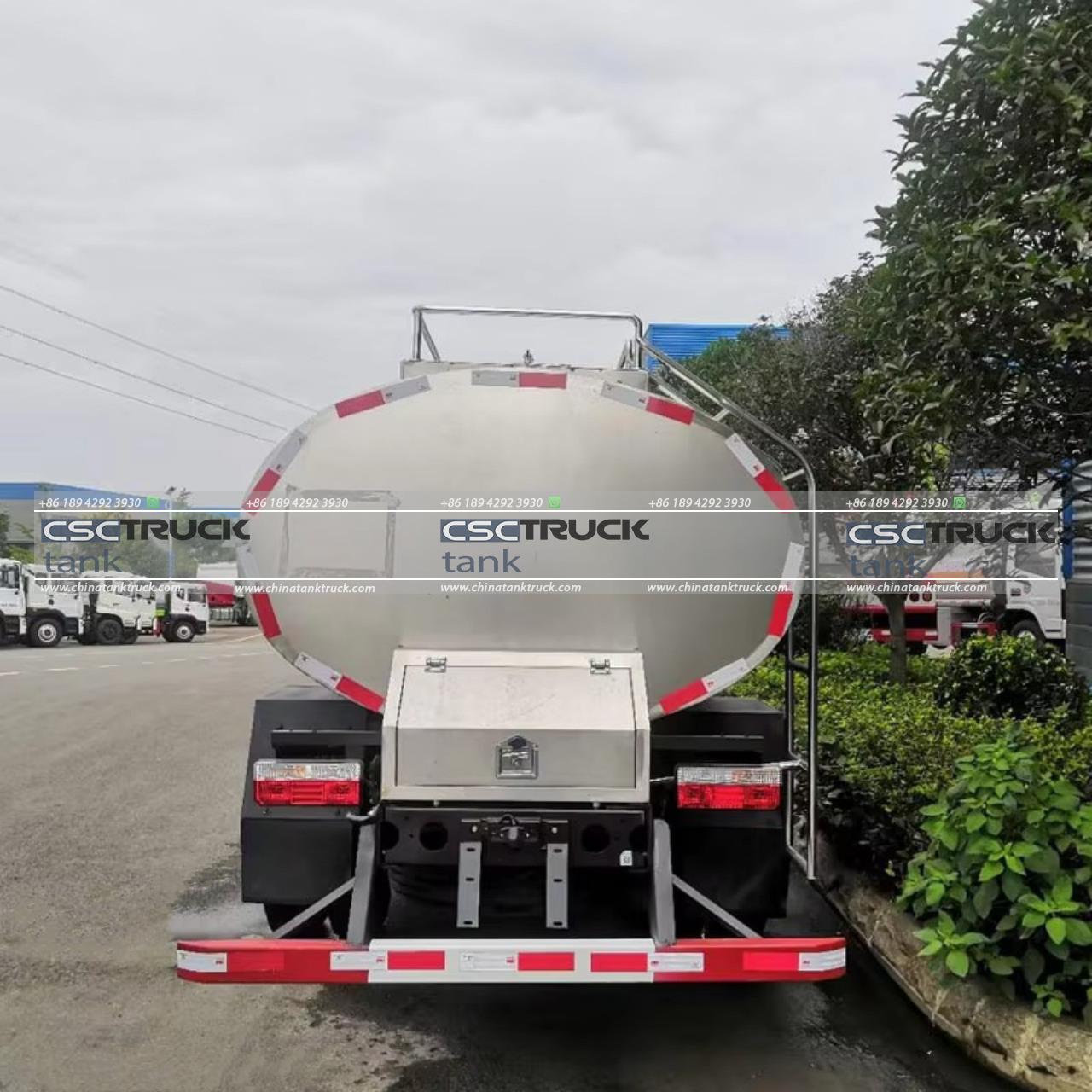How Much Milk Can a Truck Carry?
Milk trucks play a vital role in the dairy supply chain, transporting fresh milk from farms to processing facilities where it can be pasteurized, processed, and packaged for distribution. But how much milk can a truck carry, and what factors influence its capacity? In this article, we’ll look at the design and capacity of milk trucks, the regulations surrounding them, and how their payload impacts the dairy industry.
Types of Milk Trucks and Their Capacity
Milk trucks, also known as milk tankers, come in various shapes and sizes. The capacity of a milk truck largely depends on the type of truck, its design, and whether it’s a single-unit tanker or a semi-trailer tanker. Here’s a breakdown of the common types of milk trucks:
1. Single-Unit Tankers
Single-unit milk tankers consist of a single truck with an integrated tank. They are typically smaller than their semi-trailer counterparts and are often used for shorter routes or smaller dairies. These trucks have a capacity of around **3,000 to 5,000 gallons** (11,000 to 19,000 liters) of milk, depending on the model and design.
2. Semi-Trailer Tankers
Semi-trailer tankers are larger trucks that consist of a truck cab and a separate, attachable trailer with a tank. They can carry significantly more milk, making them ideal for long-haul routes or large dairy farms. The typical capacity for a semi-trailer milk tanker ranges from **6,000 to 8,000 gallons** (22,000 to 30,000 liters).
3. Double-Trailer Milk Tankers
In certain regions and for special high-capacity routes, double-trailer milk tankers are used. These trucks consist of 2 trailers connected by a specialized coupling, effectively doubling the amount of milk they can transport. Depending on local regulations, a double-trailer tanker can carry up to **12,000 to 16,000 gallons** (45,000 to 60,000 liters) of milk. However, these trucks are often restricted to specific roads or regions due to their size and weight.

Factors Affecting Milk Truck Capacity
Several key factors influence the milk-carrying capacity of a truck, including the truck’s size, the density of milk, regional regulations, and the efficiency of its load management.
1. Truck Size and Design
The design of a milk tanker directly affects how much milk it can carry. Tankers are cylindrical to ensure structural integrity and reduce the sloshing of liquid cargo, which can destabilize the vehicle. The volume of a tanker is determined by its length, diameter, and the thickness of the tank walls. Tankers also come in both insulated and non-insulated models. Insulated tankers maintain the milk at a stable temperature during transport, which is essential for preserving milk quality on longer journeys.
2. Milk Density
The density of milk, approximately 8.6 pounds per gallon (1.03 kilograms per liter), impacts how much weight a truck is hauling at full capacity. Since weight regulations are often stricter than volume regulations, milk trucks may not always be filled to their maximum volume capacity to avoid exceeding the legal weight limit.
3. Weight Regulations and Road Laws
In many countries, trucks must comply with road weight limits to prevent damage to infrastructure and ensure safety on the roads. In the U.S., the federal gross vehicle weight limit for trucks is typically **80,000 pounds** (36,287 kilograms), which includes the weight of the truck, the tank, and the milk. Exceeding this limit requires special permits, and even with these permits, routes may be restricted to prevent overloading on certain roads.
4. Load Distribution
Efficient load distribution is crucial for both safety and stability. Milk trucks typically have multiple compartments in their tanks, which help in distributing the weight evenly and reducing the movement of milk (sloshing) inside the tank. This compartmentalization is especially important for long-haul routes or mountainous terrain, where weight shifts can impact handling and braking.
Calculating Milk Capacity and Payload
Let’s consider an example to understand how much milk a typical milk truck can carry:
– Assume a semi-trailer milk tanker with a capacity of 7,000 gallons (26,500 liters).
– With milk density at 8.6 pounds per gallon, the weight of the milk alone would be:
– 7,000 gallons x 8.6 pounds per gallon = 60,200 pounds (27,300 kilograms).
Adding the weight of the truck and trailer (which can vary but is typically around 20,000 to 25,000 pounds), the total weight would approach or exceed 80,000 pounds, the maximum legal limit on many highways without additional permits. Therefore, while a truck may be capable of holding a higher volume, regulatory weight limits often reduce the actual carrying capacity.

Milk Transport and Industry Efficiency
Efficient milk transportation is essential for the dairy industry. Transporting milk quickly and in optimal conditions ensures that it remains fresh when it reaches processing facilities. Any delays or inefficiencies in transport can lead to spoilage, resulting in financial losses for dairy farmers and distributors.
Benefits of High-Capacity Trucks
Using high-capacity milk trucks, such as semi-trailer tankers, allows dairy companies to reduce the number of trips needed between farms and processing plants. This reduction in trips translates to lower fuel costs, reduced wear and tear on vehicles, and a smaller carbon footprint for the transportation process. High-capacity trucks also help streamline logistics by reducing the scheduling complexity for drivers and distributors.
Limitations and Challenges
While high-capacity milk trucks offer efficiency benefits, they come with challenges. First, not all dairy farms have the infrastructure, such as wide access roads and loading areas, to accommodate large milk trucks. In these cases, smaller trucks may need to collect milk and transfer it to a larger tanker at a central location, adding extra steps to the process.
Additionally, strict regulatory guidelines for weight and temperature monitoring mean that milk trucks must be equipped with specialized technology. Temperature sensors, GPS tracking, and automated systems that record loading and unloading details are becoming standard, adding cost and complexity to milk transport operations.
Innovations in Milk Truck Design
The dairy industry continues to innovate to improve milk transport efficiency and quality. Modern milk tankers often have advanced insulation systems to keep milk at optimal temperatures for longer periods, reducing spoilage risk. Some trucks are also equipped with onboard temperature monitoring that allows drivers to view the milk’s temperature in real time and take corrective actions if needed.
Additionally, environmental concerns are driving the development of fuel-efficient milk trucks, including hybrid and electric models. While electric trucks are still relatively new in the heavy-duty transport industry, they could eventually play a role in milk transportation as battery technology improves and charging infrastructure expands. These trucks could help reduce emissions associated with milk transport, contributing to a greener supply chain.

Conclusion: The Capacity of Milk Trucks in Context
In summary, the capacity of a milk truck can range from 3,000 to 16,000 gallons, depending on the type of truck, its design, and regional regulations. However, real-world limitations like weight restrictions and infrastructure access often mean that milk trucks carry less than their full volume capacity. The efficiency of milk transport has a direct impact on the dairy industry’s supply chain, influencing both the cost and freshness of milk when it reaches consumers.
Milk transportation will continue to evolve with technological advancements, and as regulatory guidelines adapt to modern transport methods, the dairy industry will likely see improvements in both efficiency and sustainability. Through innovations in milk tanker design and environmental responsibility, the dairy supply chain will be better positioned to meet the demands of an ever-growing consumer base, ensuring that fresh, high-quality milk remains a staple in households worldwide.

